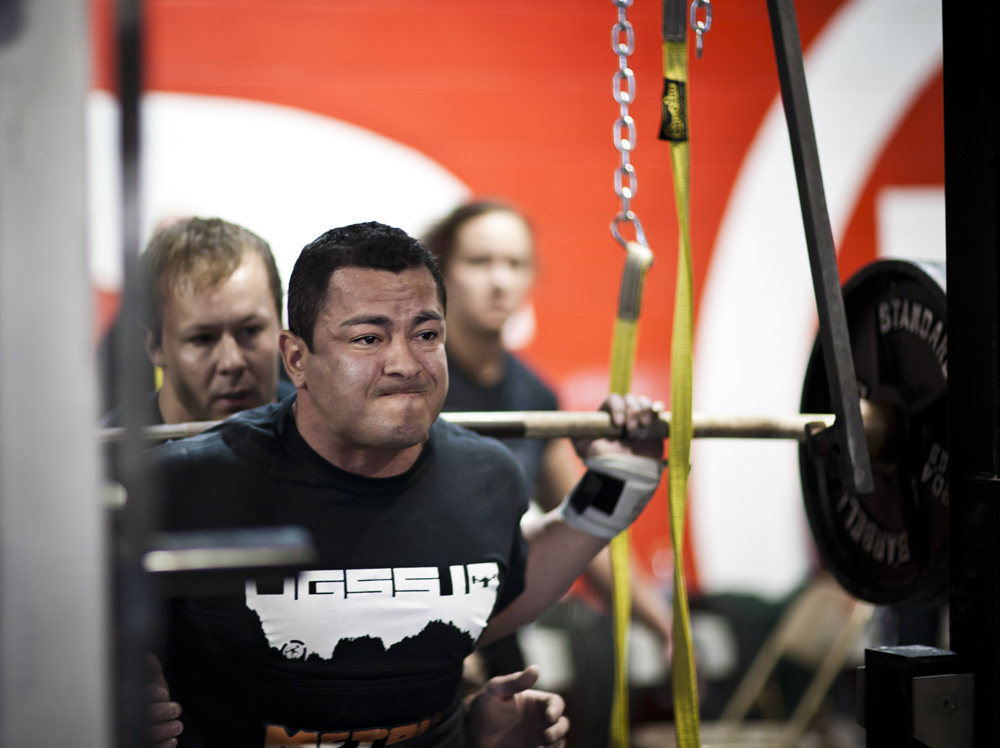
I said I would put my training on paper. However, this is more of a system than a routine. I’ll try and make it as simple as possible to both read and understand.
It’s origination came to be after I had ran a few templates by Boris Sheiko. I ran about two or three full nine week cycles, but all of them had some changes to them. I plugged in different exercises, added accommodating resistance and moved around percentages. After doing that, I basically shifted more and more of the original template until I decided to overhaul the whole thing and create a new “system.”
Most of the changes came to be after talking with people, hearing new ideas, or trying out new things. The biggest change was implementing micro cycles and using them in a more linear fashion. I hate taking deload weeks on a scheduled basis, so I waved the intensities to allow for better recovery and the ability to push continually.
Below is the chart that demonstrates how I manage the percentages, how I implement reps and sets and also how I wave them within all three lifts. For some of you who have asked about Shawn Frankl’s deadlift training that I drew up, the percentages and how I used them with his templates are derived from this. Exactly as you see them here, I plugged them in. The only difference is, every two weeks we changed the primary and secondary movement to emphasize needs. In my templates, the primary movement doesn’t always have to be the competitive lift, in fact, most of the time it’s not. Closer to a meet it will be, but on the deadlift and bench it hardly ever is. Because of the gear support in the squat, and how often I make equipment changes/alterations I do end up performing the squat in competitive fashion a lot of the times. Besides that, every workout has a primary direct exercise and a secondary direct movement.
So, looking at the template you will notice that it's a basic three week, three mini cycle template. The percentages are waved from light to medium to heavy.
Also notice the rep scheme for each mini cycle – it is split by two figures. For example: 6-4, 3-2 reps. What this means is, on the lower percentage days, perform the higher end of the reps, and on the higher percentage days, perform the lower end of the reps. As for the sets, push to perform the maximum, but listen to your body. If by the second-to-last set you felt like you just maxed out, call it a day.
Now, here's the percentage description. The reason I have a 5% gap for each day is critical. If you read some of Dave Tate's training articles. He consistently discusses the PERCEIVED MAX idea. That’s extremely important when considering working with percentages. In essence the percentages really should be an IDEA and nothing concrete, it’s an effort zone more than anything. The 5% gap allows for forgiveness. If the top end of the percent feels like max effort, drop down some. An easy way of learning to feel the effort utilized is using a rate of perceived exertion (RPE) system. On the medium and light days your RPE effort should 8 (meaning 2 reps in the tank), and on the heavy days use an RPE of 9 (1 rep in the tank).
As far as exercise selection goes, you have to be very specific to what you need. Learn to plug things in, substitute movements on a per needed basis. Utilize the movements that will have the biggest impact in overall performance. Louie Simmons has written so much on this. Make the most of your time by hitting the things that will enhance weaknesses. Think about what's currently holding you back in the strength curve. When you figure that out, you will know what exercises to choose and utilize.
A quick setup description of how I plan training is generally built on five movements at each workout. The first being a primary movement to the direct competitive lift. Pick one to help you with your weakness. The second should be another movement to help, but this can be less specific like a good morning, overhead press, or zercher good mornings. It can also be another specific movement like floor presses, reverse band squats and block pulls. The third and fourth exercises are accessory movements for the supporting muscles, and the fifth is a prehab movement.
As you can tell, the setup is crucial. Really take the time to analyze your training and your lifting in general. Talk to teammates, ask people you trust and have more knowledge than you to help analyze. If you're serious about getting stronger, be serious about how to do it.
In conclusion, I realize that without a general template, it still leaves some not completely comfortable. So I do plan to make this a four-part article series. The second part will discuss the squat, I’ll provide templates and also how you can change a few things around to include things like speed work. Not only is this article series something for me to share, but please also provide suggestions to me. I have always been very analytical, even now I reach out and learn from folks.
I leave you with this “the harder you work, the harder it is to surrender.” – Vince Lombardi









